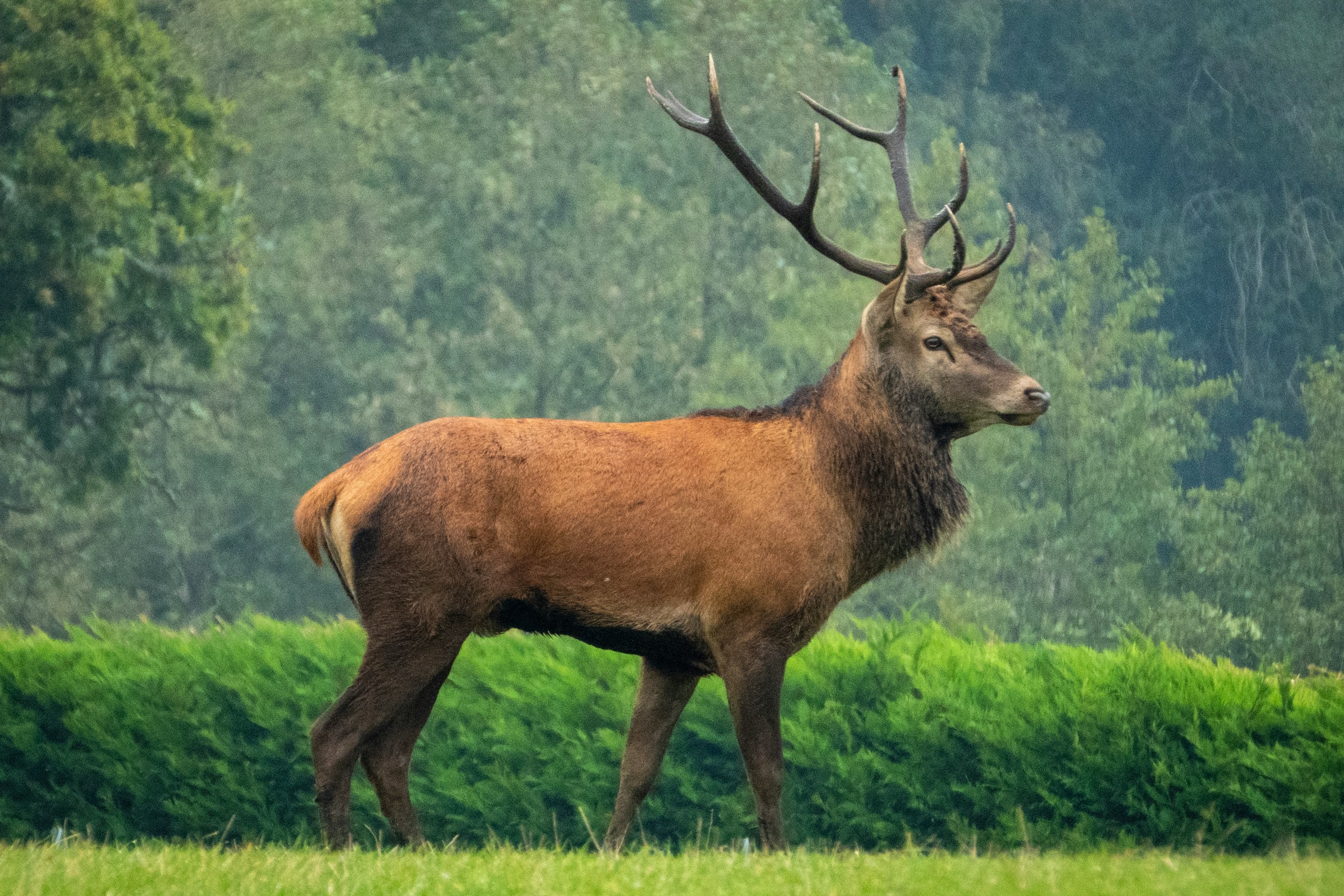Red Deer

The red deer (Cervus elaphus) is one of the largest deer species. A male red deer is called a stag or hart, and a female is called a doe or hind.
The red deer is the fourth-largest extant deer species, behind the moose, elk, and sambar deer. It is a ruminant, eating its food in two stages and having an even number of toes on each hoof, like camels, goats, and cattle. European red deer have a relatively long tail compared with their Asian and North American relatives.
The male (stag) red deer is typically 175 to 250 cm (69 to 98 in) long from the nose to the base of the tail and typically weighs 160 to 240 kg (350 to 530 lb); the female (hind) is 160 to 210 cm (63 to 83 in) long and often weighs 120 to 170 kg (260 to 370 lb).
Only the stags have antlers, which start growing in the spring and are shed each year, usually at the end of winter. Antlers typically measure 71 cm (28 in) in total length and weigh 1 kg (2.2 lb), although large ones can grow to 115 cm (45 in) and weigh 5 kg (11 lb). Antlers, which are made of bone, can grow at a rate of 2.5 cm (1 in) a day. While an antler is growing, it is covered with highly vascular skin called velvet, which supplies oxygen and nutrients to the growing bone.